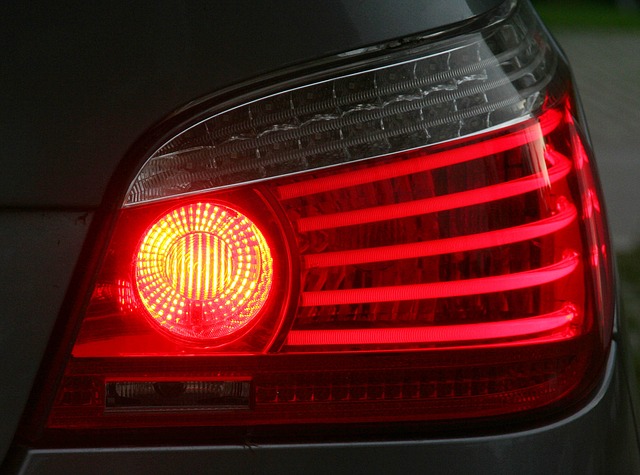Not being able to see brake lights is like not being able to see the back of your head. How do you know when they are working? Judging by the way many cars are driving with only one brake light, not many drivers check their brake lights or know how to check them.
WHY DO CARS HAVE BRAKE LIGHTS?
It’s an obvious question, and although we know the answer, we often don’t realize its significance. The answer is that brake lights are mandatory and part of the roadworthiness of your car. Brake lights are there to indicate to a driver that the car in front is braking, which means the driver has to slow down to avoid crashing into the car in front.
THE DANGER OF HAVING NO BRAKE LIGHTS
If you, as a driver, are behind a car in traffic with no brake lights, you will not know when brakes are being applied. Thus, you won’t know when the car is slowing down, which can be slowly in some cases, or rapid in other cases. The enormous danger is that a rear-end accident is almost inevitable.
THE DANGER OF HAVING ONLY ONE BRAKE LIGHT SHOWING
One brake light showing on a car could be interpreted as a stuck indicator, or could appear to be a strange indicator light if brakes are applied intermittently.
HOW OFTEN SHOULD YOU CHECK YOUR CAR’S BRAKE LIGHTS?
It would be a good practice to examine your brake lights once a week.1 If you do it once a month, it could mean that you drive for a whole month in traffic without any brake lights. The longer you leave the checking part, the greater the chance that someone following your car does not notice that you are stopping. You may be held liable for damages regarding a rear end crash. Hopefully, your insurer won’t reject your claim because your car is not roadworthy.
HOW TO CHECK IF YOUR CAR’S BRAKE LIGHTS ARE WORKING
All you need to do is to start the car, and then ask someone to check the brake lights while depressing the brake pedal. And while you are about it, that person may as well check your reverse light and your indicator lights as standard practice.
YOU CAN TEST YOUR CAR’S BRAKE LIGHTS WITHOUT ANY HELP
You may be a person living by yourself and there is no one to help you test your car for brake lights.2 So what can you do?
USE A BROOM TO TEST YOUR BRAKE LIGHTS
You can use a broom, by pushing down the brake pedal with the one end, and placing the other end against a cushion on the back rest of the driver’s seat.2 Go to the car’s rear to check the brake lights.
USE THE REFLECTION IN A SHOP WINDOW TO TEST YOUR BRAKE LIGHTS
By reversing your car towards a shop window in a parking lot, you can see, in your rear view mirror, the reflection of your car’s brake lights.2 The extra bonus is that you can also see if your reverse lights and indicator lights are working.
DON’T DRIVE AROUND WITH YOUR REAR FOG LIGHTS SWITCHED ON IF THERE IS NO FOG
Many cars have a separate switch for turning on rear fog lights. It’s most important that rear fog lights should only be used when driving under poor visibility. The problem is that rear fog lights are particularly bright red, to alert other drivers approaching from the rear.3 But, there is a dangerous side to having rear fog lights switched on during the day under clear conditions.
LEAVING REAR FOG LIGHTS ON DURING THE DAY COULD POSE GREAT DANGER AND IS ILLEGAL
Rear fog lights, located near the brake lights, and switched on during the day could be mistaken by a driver that you are braking, but which, actually, is not the case. Alternatively, drivers may get used to seeing rear fog lights switched on, and may ignore the car when it does brake.
Now that you know when to and how to check for brake lights on your car, make sure you protect your car by purchasing adequate and affordable car insurance.
Disclaimer:
This article was prepared by Eric Sandmann in his personal capacity. The views and opinions expressed in this article are the author’s own and do not reflect the views and opinions of Prime Meridian Direct (Pty) Ltd, FSP41040.The views and opinions in the article should not be attributed to anyone but the author unless expressly stated. Nothing in this article should be relied upon as advice, this publication is presented for informational purposes only. No person should act or refrain from acting in reliance on any information found in this article, without first obtaining proper financial advice from the appropriate professional. The author makes no claims, promises or guarantees about the accuracy, or completeness, of any information linked from, referred to, or contained in this article. The author reserves the right, to edit and change the content of this article.
How can we Prevent Rear-End Crashes and Collisions? https://t.co/jjsXCJjEFi #ArriveAlive #RoadSafety pic.twitter.com/qaFgGrVMHc
— Arrive Alive (@_ArriveAlive) March 31, 2019
